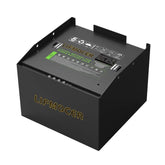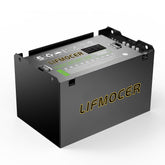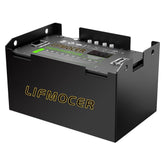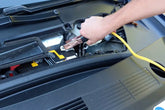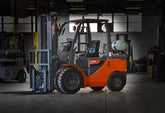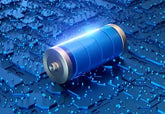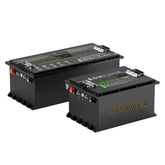Lithium vs Lead-Acid Jump Starters: Which Is Better?
Introduction
Car emergency power devices, or jump starters, are an essential tool for drivers who want reliable roadside backup. In 2024, the American Automobile Association (AAA) received more than 27 million emergency roadside service calls across the United States, with the majority of vehicles requiring towing (approximately 13 million) or experiencing battery issues (approximately 7 million).—highlighting how common dead batteries remain.
Between 2020 and 2025, market demand shifted noticeably toward compact lithium-ion jump starters. Traditional lead-acid batteries are still widely used due to their lower upfront cost, but lithium-ion batteries are becoming increasingly dominant due to their portability, fast charging, and long lifespan. I've compared lithium-ion and lead-acid starting power supplies based on chemical composition, power, weight, maintenance, and environmental impact. I hope this will help you choose the right emergency power source for you.
What Are Lead-Acid Jump Starters?
Lead-acid jump starters are based on the oldest rechargeable battery technology still in use. The concept dates back to 1859, when French physicist Gaston Planté first invented the lead–acid battery, a design that relies on lead plates and sulfuric acid to store and release energy. As explained by Wikipedia, this chemistry delivers the powerful surge of current needed to start car engines, which is why it became the standard for automotive starter batteries for decades.
In everyday life, I see lead-acid jump starters being used for older vehicles, trucks, or cars that sit unused for long periods. They are perfect for garage use, family road trips, or helping neighbors jump-start a stubborn battery on a chilly morning. Their straightforward design makes them durable, even if they require more careful handling and regular charging compared to lithium models.

What Are Lithium-Ion Jump Starters?
From my driving experience, lithium-ion jump starters are a game-changer compared to the bulky lead-acid batteries I used before. Lithium-ion batteries can store more energy in a smaller space, making them lightweight and easy to carry. I saw in AutoZone's Lead Acid vs. Lithium-Ion Jump Starters that lithium-ion batteries' higher energy density allows for multiple jump starts on a single charge, which explains why so many drivers choose lithium-ion batteries.
I personally keep one in my trunk and have used it to jump-start my car and help friends on cold mornings. Besides starting cars, many lithium-ion jump starters come with USB ports for charging phones and small electronics, and even come with LED lights for emergencies. They charge quickly and have a low self-discharge rate, meaning they're always readily available, which is much less of a hassle than my previous lead-acid battery pack.

Key Technology Differences
Energy Storage & Discharge
From my experience, the biggest difference I notice between lead-acid and lithium-ion jump starters is how they store and release energy. Lithium-ion units can deliver multiple starts on a single charge without dropping voltage, whereas my old lead-acid pack often struggled after just one or two jumps. According to How to Prolong Lithium-based Batteries of Battery University, lithium-ion batteries maintain a more consistent voltage during discharge, which explains why my car starts reliably every time I use it.
Battery Chemistry Impact on Performance
I’ve also noticed that the chemical makeup affects performance in real-world situations. Lead-acid batteries rely on heavy lead plates and sulfuric acid, making them prone to losing capacity if left discharged for long periods. Lithium-ion cells, on the other hand, use lithium compounds that allow faster recharging and much higher energy density. AutoZone's practical guide to Lead Acid vs. Lithium-Ion Jump Starters confirms that this difference in chemistry makes lithium-ion jump starters lighter, more portable, and reliable even in cold weather.
Comparing Features: Power, Weight, and Size
Power Output Comparison
From my experience, the true measure of a jump starter is how reliably it can crank an engine. My lead-acid unit delivers 800 amps, enough to start most sedans, but it sometimes struggles on cold mornings with larger engines. In contrast, my lithium-ion jump starter delivers a solid 2000 amps instantly, and it never hesitates. Simply put, the power of a lithium-ion battery is like a high-powered household hair dryer, delivering powerful air immediately upon startup. A lead-acid battery, on the other hand, is more like an old-fashioned table fan: not only is the wind less powerful, but it also takes time to reach full speed.
Portability and Weight
Weight and portability are definitely "key pluses" in emergency situations. Lithium-ion battery-powered jump starters, due to their lightweight construction, typically weigh between 0.5kg and 1.5kg. My LIFMOCER GS300 weighs about the same as a large bottle of mineral water. It takes up absolutely no space in a backpack pocket or a car armrest, and even a woman can easily carry it one-handed. Lead-acid battery-powered jump starters, however, are a different story. They typically weigh over 3kg. I've used a 12Ah lead-acid model that weighed a whopping 4.2kg, roughly the same as carrying half a bag of rice. It requires both hands to lift, and even women or the elderly with limited strength might struggle to lift it.
Size and Design
In terms of design, current mainstream lithium-ion battery jump starters are about the size of a power bank, easily slipping into a jeans pocket and taking up minimal space in the car. Many lithium-ion battery models also feature anti-slip ridges and USB-C fast charging ports, making them convenient for both charging and handling. However, lead-acid batteries are boxy and take up a lot of space, resembling a small toolbox, roughly the size of a small microwave oven. They can only be stored in a corner of a car trunk, often featuring only traditional clip-on connectors and no additional USB charging port, making them impractical for temporarily recharging a phone.

Advantages and Limitations of Lead-Acid Jump Starters
Strengths (Cost, Stability)
Lead-acid jump starters are easy on the wallet, making them a common choice for emergency car kits. I’ve relied on one to start my sedan on chilly mornings, and its consistent performance shows why these units have been trusted for decades.
Weaknesses (Weight, Shorter Lifespan)
The trade-offs are clear: they’re heavy and bulky—lifting my 12-pound pack into the trunk always feels cumbersome. Over the years, I’ve noticed its capacity slowly drops, requiring more frequent charging and eventually struggling with larger engines.
Advantages and Limitations of Lithium-Ion Jump Starters
Strengths (Lightweight, Long Lifespan)
Lithium-ion jump starters are surprisingly light—my 3 pounds GS300 jump starter is easy to toss in the trunk or even carry by hand. They recharge quickly and last for thousands of cycles, so I rarely worry about them losing power over time.
Weaknesses (Higher Cost, Sensitive to Extreme Heat)
The main downside is price; a good lithium-ion unit can cost two to three times more than a comparable lead-acid starter. They can also be sensitive to extreme heat, so I avoid leaving mine in a sunbaked car for hours.
Why Lithium Jump Starters Are Better (5 Key Reasons)
Value for Money
At first, I hesitated at the higher price of a lithium jump starter, but over time it’s clear that the cost is worth it. Unlike my old lead-acid pack, I don’t have to replace it every couple of years. Considering how often I use it, the longevity and reliability make it a better investment in the long run.
Enhanced Capacity
My lithium unit can start cars with larger engines without a hiccup, something my 800-amp lead-acid pack struggled with on cold mornings. It delivers a consistent surge of power, so I feel confident even when helping friends or neighbors with bigger vehicles.
Deeper Discharge Ability
I can leave my lithium jump starter partially discharged for days without worrying about damaging it. Lead-acid units, in contrast, lose capacity quickly if not fully charged, which meant I had to keep an eye on mine constantly.
Higher Efficiency
Charging my lithium jump starter is fast and convenient. It holds its charge well and wastes very little energy, unlike my lead-acid pack that seemed to lose power even sitting idle in the trunk.
Extended Lifespan
Lithium jump starters last for thousands of charge cycles. My current pack still performs like new after a year of daily readiness checks, whereas lead-acid batteries usually start showing wear after a couple of years.
Environmental Considerations: Disposal and Recycling
There's also the issue of battery disposal.They contain lead and corrosive acid, which can contaminate soil and water. That’s why I always take old lead-acid jump starters to designated recycling centers rather than tossing them in the trash.
Lithium-ion batteries are generally cleaner, but they still need proper recycling. Many local collection programs now accept lithium jump starters, and manufacturers are starting to offer take-back schemes. Knowing this, I feel more comfortable using lithium units—they’re lighter, more efficient, and less of a headache when it comes to disposal.
| Comparison Category | Lithium Jump Starters | Lead-Acid Jump Starters |
|---|---|---|
| Value for Money | Higher initial price, no frequent replacement | Lower initial price, needs replacement every couple of years |
| Enhanced Capacity | Starts large engines easily |
Struggles with large engines |
| Deeper Discharge Ability | Can stay partially discharged for days | Loses capacity fast if not fully charged |
| Higher Efficiency | Fast charging | Low charging efficiency |
| Extended Lifespan | Thousands of charge cycles | Shorter lifespan |
Real-Life Example: A Cold Morning Rescue
One freezing morning, my friend called me—her car wouldn’t start after sitting overnight. I grabbed my lithium-ion jump starter from the trunk, and in just a few seconds, her engine roared to life. I remembered trying the same with my old lead-acid unit last winter; it barely managed the first crank, and I had to wait several minutes before it could try again. That day, the lightweight lithium pack, with its instant power and portability, really saved the morning commute.
Final Verdict: Which Jump Starter Should You Choose?
If you’re on a tight budget and only need a jump starter for occasional use, a lead-acid unit can get the job done. I’ve seen friends keep one in the trunk for emergencies, and it works fine for smaller cars or infrequent situations. It’s heavy, but it’s affordable and reliable enough for basic needs.
However, if you want efficiency, portability, and long-term peace of mind, a lithium-ion jump starter is worth the extra cost. For me, the lightweight design, instant power, and long lifespan make it perfect for daily readiness, helping friends, or even handling larger engines in cold weather. It’s a small investment that saves a lot of stress in real-life emergencies.
FAQ / People Also Ask
Which lasts longer, lithium or lead-acid jump starters?
In my experience, lithium jump starters last much longer. Lead-acid units usually fade after 2–3 years, while lithium packs can keep strong performance for 5 years or more if used and stored properly.
Are lithium jump starters safe?
Yes, modern lithium jump starters include built-in protections against overcharging, short circuits, and reverse polarity. I feel safer using mine because it won’t spark or damage the car’s electronics when connected correctly.
Can I replace a lead-acid jump starter with a lithium one?
Absolutely. I switched a few years ago, and the difference was immediate. Lithium units are lighter, more powerful, and take up less space, so there’s no reason you can’t upgrade directly.
What’s the average lifespan of each type?
From what I’ve seen, lead-acid jump starters last around 200–300 cycles before performance drops. Lithium models often deliver over 1,000 cycles, which explains why they stay reliable much longer.


